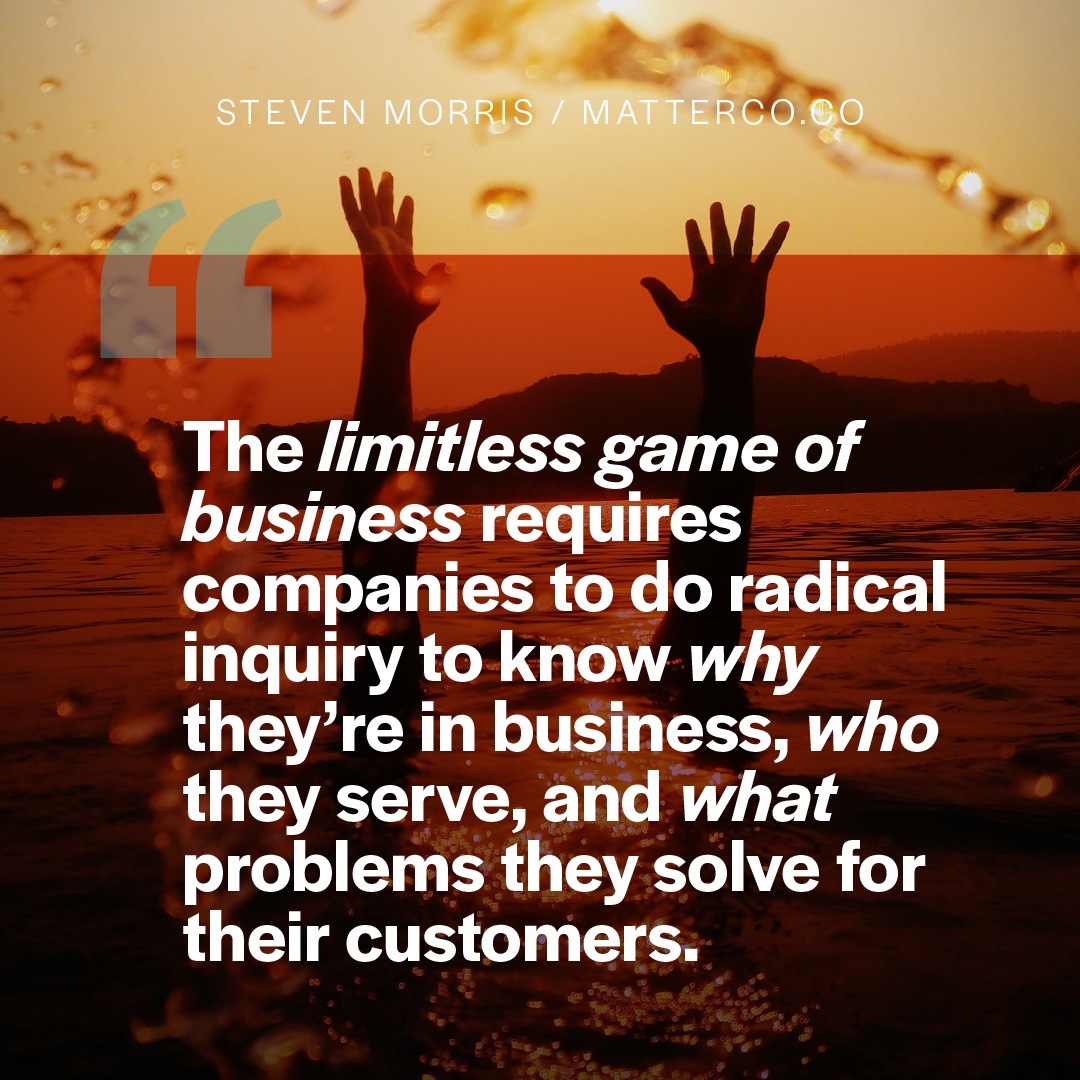
How to Play the Game of Business
Late last year, I gave a talk to a group of MBA students at SDSU. One bright student asked a line of questions about brands and their competition.
The question came after I talked to them about how brands position themselves in the market and how they should, for the most part, ignore the competition. Of course, this is counter to what they have been taught and how most businesses behave.
The question was, “if you ignore the competition, how do you beat them?” Such a beautiful question.
My response went something like this:
“There are two ways to play the game of business.
One way assumes that you’re out to beat the competition and that you’ll do pretty much anything to win. Here there is one outcome: to win.
This game is the competition game. It’s the game of limitations and scarcity, where folks believe there’s not enough to go around. It’s the game where brands chase customers. It’s a game where the players assume there can only be one winner. You’re always playing it, and you see the world as a constant threat.
The rules seem set, like in baseball, soccer, and chess. When the competition zigs, you zag. When the competition cuts their prices, you react by cutting yours. When the competition comes out with a new product line, your innovative energy is invested in topping them. This game is driven by fear of losing your customers or market share.
The other way to play is the limitless game. This game involves knowing what the competition is doing but doing your own thing regardless. It requires the company to do radical organizational inquiry to know why they’re in business, who they serve, and what problems they solve for their customers and more.
This game requires businesses to focus on their unique and special something, their deeply known beliefs, and their operational values through the clarifying lens of knowing who you serve and how and why you serve them. The horizon you scan for is for data inside your organization’s walls, and you scan the life and lifestyle of your customers to provide a solution set for their unmet needs, wants, and desires.
The limitless (AKA cooperative, abundant) game assumes your company believes in an unlimited marketplace, where there’s room for a wide variety of business offerings that succeed because they serve customers in different ways. Here, you may actually collaborate with the “competition.” Here you make your own rules on how you play and what success looks like.”
Here’s the truth: there’s no such thing as a winner at the game of business. There are no rules, no one way to play, no one way to measure success. What’s successful to you and your business may very likely be very different than how your closest competitors measure success.
So, why bother competing at all. In the limitless game, there is only what’s ahead (possibilities and potential) and what’s behind (data, wisdom, and insight).
The best businesses I’ve seen and had the pleasure to work with play their own game, by their own rules. For instance, one company I work with measures part of their success by employee life-satisfaction — the degree to which their entire staff of 150+ people lives fulfilling lives. It’s bottom-up culture nurturing. And, they’re growing at a 30%+ year-over-year clip in a highly competitive industry.
In order to know what success looks like, you have to know which game you’re playing. With this here some questions to consider:
- Have you set your own metrics for success? (Think: your people, your customers, your stakeholders)
- Have you created your own rules to play YOUR game of business?
- Have you and your team defined your own operational value set, your own beliefs, your own rewards?
If you want a more trusting team, a culture of belonging or a magnetic brand that attracts more of the right customers, I can help. If you'd like to explore if working together makes sense, drop me a line.







